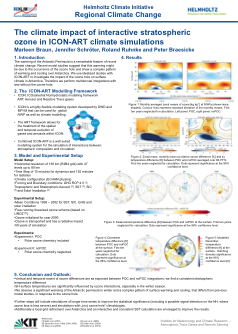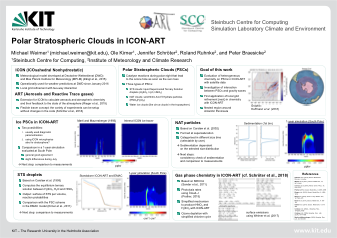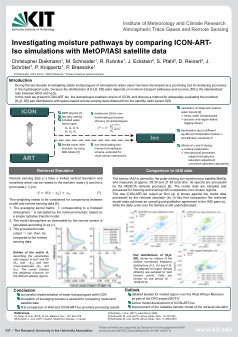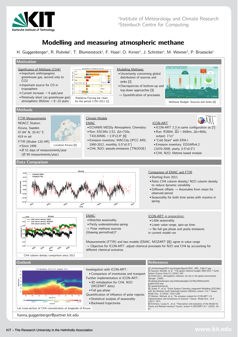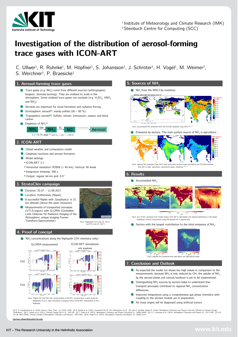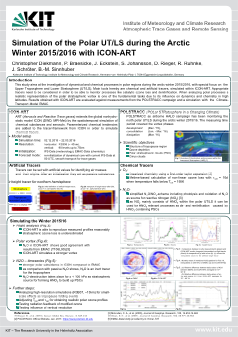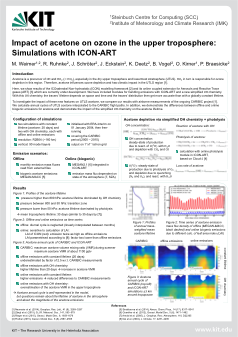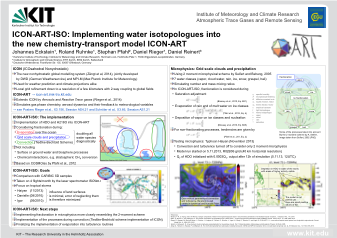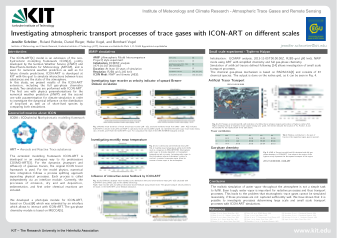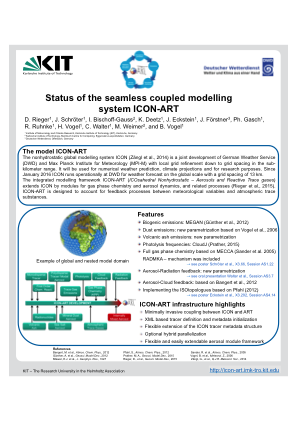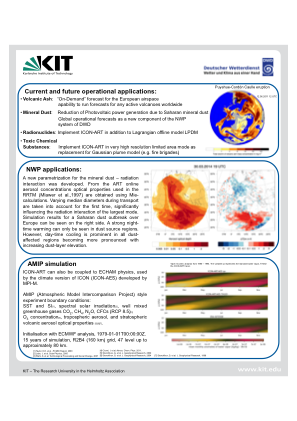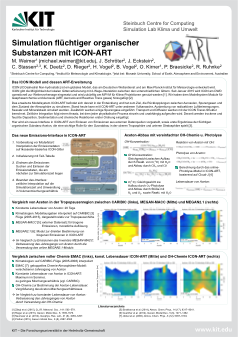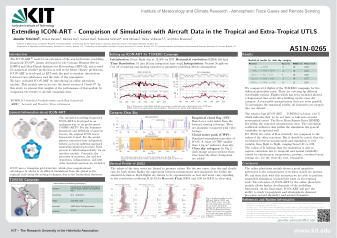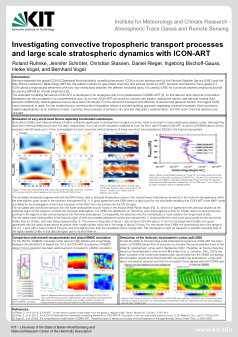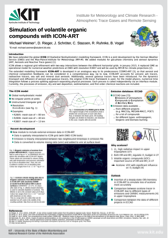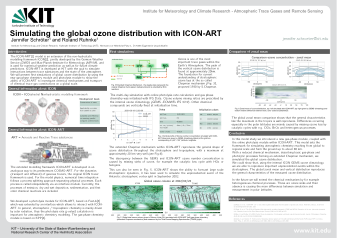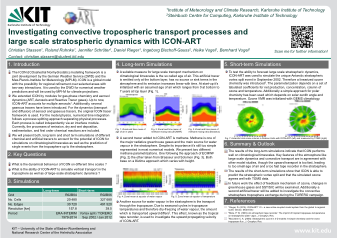ICON-ART
![]()
ICON is a modern and high-resultion model of the next generation of numerical weather forecasting models. The development project of ICON (ICOsahedral Nonhydrostatic) started as a joint project of DWD (German Weather Service) and MPI-M (Max-Planck-Institut of Meteorology). DWD runs ICON operationally since the beginning of 2015 to provide boundary conditions for the regional model COSMO-EU. ICON has replaced the old hydrostatic global model GME. In the future MPI-M will use ICON for climate projections.
At KIT we are working on an extension of ICON, the ICON-ART module (Aerosol and Reactive Trace gases). This extension should allow to investigate and to simulate chemical processes of chemical tracers and the transport of aerosols like volcanic ash.
Chemical processes in the troposphere as well as in the stratosphere are mainly influenced by so called photodissociation or photolysis. In this process, molecules are absorbing photons of a specific wavelength and dissociate. The dissociation rate is called photolysis rate and is influenced by the incoming solar flux intensity, as well as scattering and absorption processes. In order to provide sufficient and realistic simulations of chemical processes within the Earth’s atmosphere a routine for precise and efficient calculation of photolysis rates is needed. Within ICON-ART we are using the well established stand-alone module FastJx, which is controlled over an Interface. Thus we are able to calculate photolysisrates of 72 species at every grid point (vertically and horizontally) at every integration time step. Right now, the clear sky case and the influence of clouds are implemented. The factor of aerosols scattering is not taken into account, yet. The treatment of chemical processes in ICON-ART should be realised through a module which provides a full gas phase chemistry. This module is enlarged with the online photolysis module.
The midterm goal of this work is to get a better understanding of the ozone budget within the climate sensitive UTLS, and its determining factors. These factors are for example the influence of HOx species OH and HO2. We want to achieve a better understanding of atmospheric ozone through process studies using ICON-ART.
Publications:
Rieger, D., Bangert, M., Bischoff-Gauss, I., Förstner, J., Lundgren, K., Reinert, D., Schröter, J., Vogel, H., Zängl, G., Ruhnke, R., and Vogel, B.: ICON–ART 1.0 – a new online-coupled model system from the global to regional scale, Geosci. Model Dev., 8, 1659-1676, doi:10.5194/gmd-8-1659-2015, 2015.
Weimer, M., Schröter, J., Eckstein, J., Deetz, K., Neumaier, M., Fischbeck, G., Hu, L., Millet, D. B., Rieger, D., Vogel, H., Vogel, B., Reddmann, T., Kirner, O., Ruhnke, R., and Braesicke, P.: An emission module for ICON-ART 2.0: implementation and simulations of acetone, Geosci. Model Dev., 10, 2471-2494, https://doi.org/10.5194/gmd-10-2471-2017, 2017.
Schröter, J., Rieger, D., Stassen, C., Vogel, H., Weimer, M., Werchner, S., Förstner, J., Prill, F., Reinert, D., Zängl, G., Giorgetta, M., Ruhnke, R., Vogel, B., and Braesicke, P.: ICON-ART 2.1: a flexible tracer framework and its application for composition studies in numerical weather forecasting and climate simulations, Geosci. Model Dev., 11, 4043-4068, https://doi.org/10.5194/gmd-11-4043-2018, 2018.
Poster:

